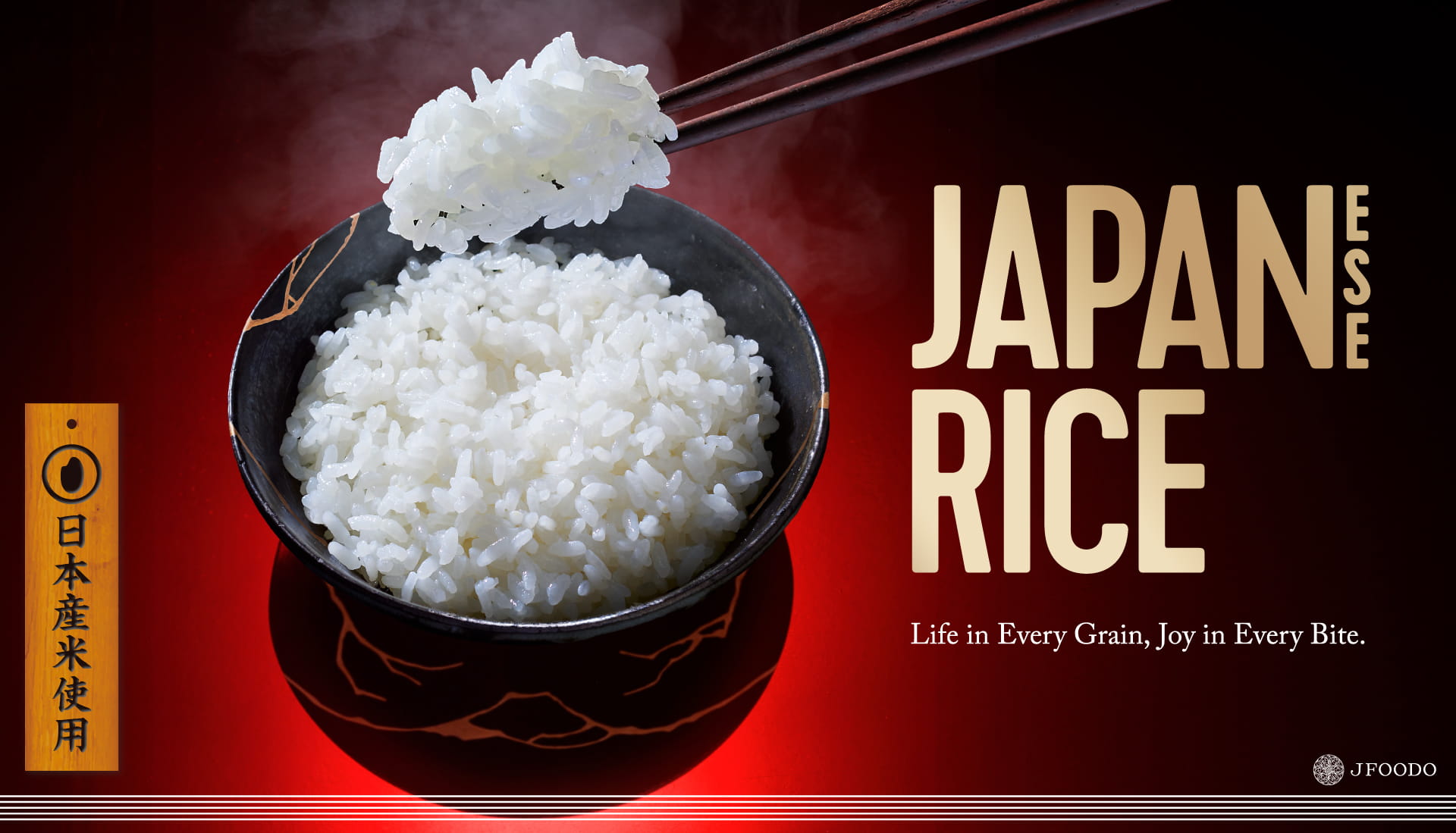

Artisanship
The professionals behind the great taste of Japanese rice
Japanese farmers harvest about 7 million tons of rice each year. With Japan’s climate only allowing them to harvest once a year, they take great care throughout the year to produce delicious rice for us to enjoy.
There is a plentiful supply of water from melted snow off the Yatsugatake Mountain Range to grow rice on this land at an elevation of 700 meters, which is blessed with the beauty of the four seasons as they change. Ryoji Shimooka from Komekono Ltd. tells us how he plants the rice seedlings in spring and maintains the fields through summer, monitoring the water levels and other conditions in each paddy of his 40 hectares of land, making adjustments so the seedlings get the right humidity and temperature for optimal growth until the rice is harvested in autumn. In Japan, rice growing flourishes in the mountainous regions, where the cold water from mountain rivers is mineral-rich and the warm conditions in the basins make for big temperature differences between night and day. That allows growers to produce rice that has plenty of starch with excellent stickiness and sweetness.
Komekono prepares fertiliser mixes optimised for each of the rice varieties they grow, including of course Koshihikari, the go-to choice in Japan, as well as Kazesayaka, a Nagano Prefecture original variety.
Japanese growers finely tailor their efforts in cultivating the different varieties of delicious Japanese rice they produce.

Polishing is the process of removing the outer husk, bran, and other parts from brown rice. It is an important process crucial to the taste of Japanese rice.
In Japan, the government has set a shipping standard so that the moisture content of polished rice is below a certain level. Polishers everywhere have the skills to precisely polish rice, taking into account factors such as the harvest date, moisture content, and outer husk hardness.
CEO Shinichi Katayama runs the specialty rice store Sumidaya Shoten in Sumida, in the heart of Tokyo. He uses a method of polishing rice passed down from olden times that avoids overheating it, spending six to seven times the usual amount of time on polishing, which enhances its inherent rich aroma.
Sumidaya Shoten uses their expertise to judge the sort of rice customers want based on factors such as when they are going to eat it and in what situations they will be eating it, then adjust their polishing processes accordingly.
In Japan, rice polishers are continuously updating their skills and techniques to bring out the best taste of the rice grown in Japan.

This logo was created by the Japan Rice and Rice Industry Export Promotion Association, which champions Japanese rice exports. Mt. Fuji, cherry blossoms, and the sun. Three distinctive images, which, together with ears of rice, as well as a sacred straw rope around encircling clouds, give the logo its Japanese character.
This is the wooden tag that millers who carefully polish Japanese rice have given to stores, as a marker to indicate that they use Japanese rice.
Try looking out for these markers to find Japanese rice.

#1

Soaking is essential to maximise the taste of Japanese rice.
Soaking lets the water penetrate to the center of each grain of rice and bring out the most sweetness and aroma, giving you cooked rice that is plump and sticky.
Even if you don’t have the time, we recommend soaking the rice in water for as long as possible until the water becomes cloudy.
#2

Freshly cooked rice is of course delicious, but did you know that rice tastes great even when it’s lukewarm? One of the distinctive characteristics of Japanese rice is that its qualities don’t change even when it cools off. Compared to eating it as soon as it’s cooked, you bring out even more of the sweetness of the rice by letting off the steam and heat of cooking until the rice is nearly lukewarm. “Onigiri” rice balls are a classic way to eat rice. You make them when the rice is lukewarm, and that lets you savour each grain and discover the rice becoming more and more delicious.
#3

Japanese rice has a long history of improvement by being grown in areas best suited for its cultivation, which has brought out the sweetness of the starch, allowing it to complement all sorts of ingredients and carving out an important place in Japanese culture.
The sweet aroma you sense with your nose, and the sweetness and fresh sensation on the palate that improves as you eat it are what you could call the “umami”, the deliciousness, of Japanese rice. Enjoy the pleasure of Japanese rice with all five of your senses.
Masterclasses / Restaurants
Where you can eat Japanese Rice
We are offering a range of masterclassess to familiarise your five senses with Japanese rice.
The masterclasses at each restaurant will focus on a different topic and different features of Japanese rice for you to experience, so please feel free to join any of the masterclassess that appeal to you.
Running at the same time is a restaurant campaign offering special Japanese rice dishes at the front of the restaurant. Join our Japanese Rice masterclasses try the dishes at the different venues.
Find your restaurants for more information about the participating restaurants.
Promotion Period: December 10, 2023~End of February 2024
Please contact each restaurant for detailed dates and times!